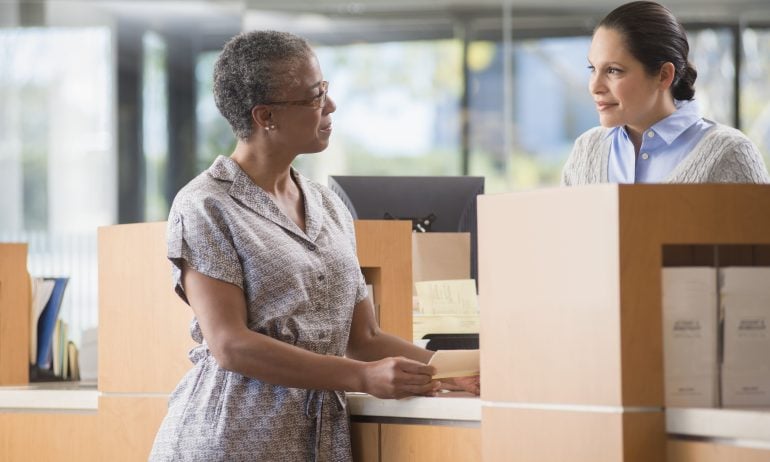Cashier’s Check vs. Money Order: How to Decide

Many or all of the products featured here are from our partners who compensate us. This influences which products we write about and where and how the product appears on a page. However, this does not influence our evaluations. Our opinions are our own. Here is a list of our partners and here's how we make money.
Money orders and cashier’s checks can each be helpful if you need a more secure payment method than a personal check or cash — or if you don’t have a checking account. But they have some key distinctions.
What’s the difference between cashier’s checks and money orders?
The main difference between cashier’s checks and money orders is that cashier’s checks are better for larger purchases whereas money orders come in smaller amounts. Additionally, cashier’s checks tend to cost more while money orders are cheaper and easier to buy.
Use a cashier's check if ... | Use a money order if ... |
|---|---|
|
|
Here's how to decide which works best for you.
When should I use a cashier’s check?
Cashier’s checks are better for large purchases. Say you want to spend $5,000 on a used car, but the seller won’t accept a personal check. If you’re not keen on carrying large amounts of cash, you need another form of guaranteed payment.
In this case, a cashier’s check, sometimes called an official check, would be the better choice. Many businesses won't issue a money order for more than $1,000, but there's typically no limit on the amount a cashier's check can cover.
On the other hand, if you need to make a $500 deposit for an apartment and can’t use a personal check, a money order would be wiser because they're generally less expensive.

Member FDIC
SoFi Checking and Savings

4.60%
$0

Member FDIC
EverBank Performance℠ Savings

5.15%
$0
Which costs less, a cashier’s check or a money order?
Money orders usually cost less. Walmart has some of the best prices for money orders, charging a maximum of $1 (exact costs can vary based on where you shop). The U.S. Postal Service charges from $2.10 to $3, depending on the amount. Banks often charge around $5.
Cashier’s checks in any amount will set you back around $10.
Some banks and credit unions waive fees on cashier’s checks and money orders for customers with certain accounts.
Which is easier to buy?
Money orders are easier to buy. You can buy money orders at post offices, some retail stores, banks, money transfer outlets and elsewhere. Going to a supermarket for milk? You could also pick up a money order at the customer-service counter.
Cashier’s checks, on the other hand, are usually available only from a financial institution where you're a member.
If you’re hoping to buy either one online, you won’t have much luck. Issuers often require that you visit a physical location to buy a money order or cashier’s check. If that’s not an option, you could ask your recipient to let you send money online instead. This is typically free with a bank account, and among peer-to-peer transfer services, Venmo doesn’t charge users for paying with a prepaid debit card.
» MORE: Best ways to send money online
Which is safer, a money order or a cashier’s check?
Cashier’s checks can be a little safer. If you lose a cashier’s check or money order, or if it’s stolen, you can take steps to recover your money — generally by showing the issuer your receipt and asking for a refund. That makes either option safer than carrying cash.
However, on a money order, the purchaser fills in the receiver's name, which is similar to writing a check. (Learn more about how to write a check here.) If you lose the money order before filling it in, anyone could cash it. And once someone cashes that money order, you more than likely won’t get your money back.
If a money order or cashier’s check is cashed fraudulently, you could contact police and work through the legal system to try to recover the money.
Cashier’s checks offer a bit more protection, because the financial institution fills out the “pay to” line instead of the purchaser. And an official check drawn up by a financial institution may seem more credible to a recipient than a money order from your local 24-hour market. But either option is a good way to guarantee payment.
On a similar note...
Find a better savings account
See NerdWallet's picks for the best high-yield online savings accounts.









